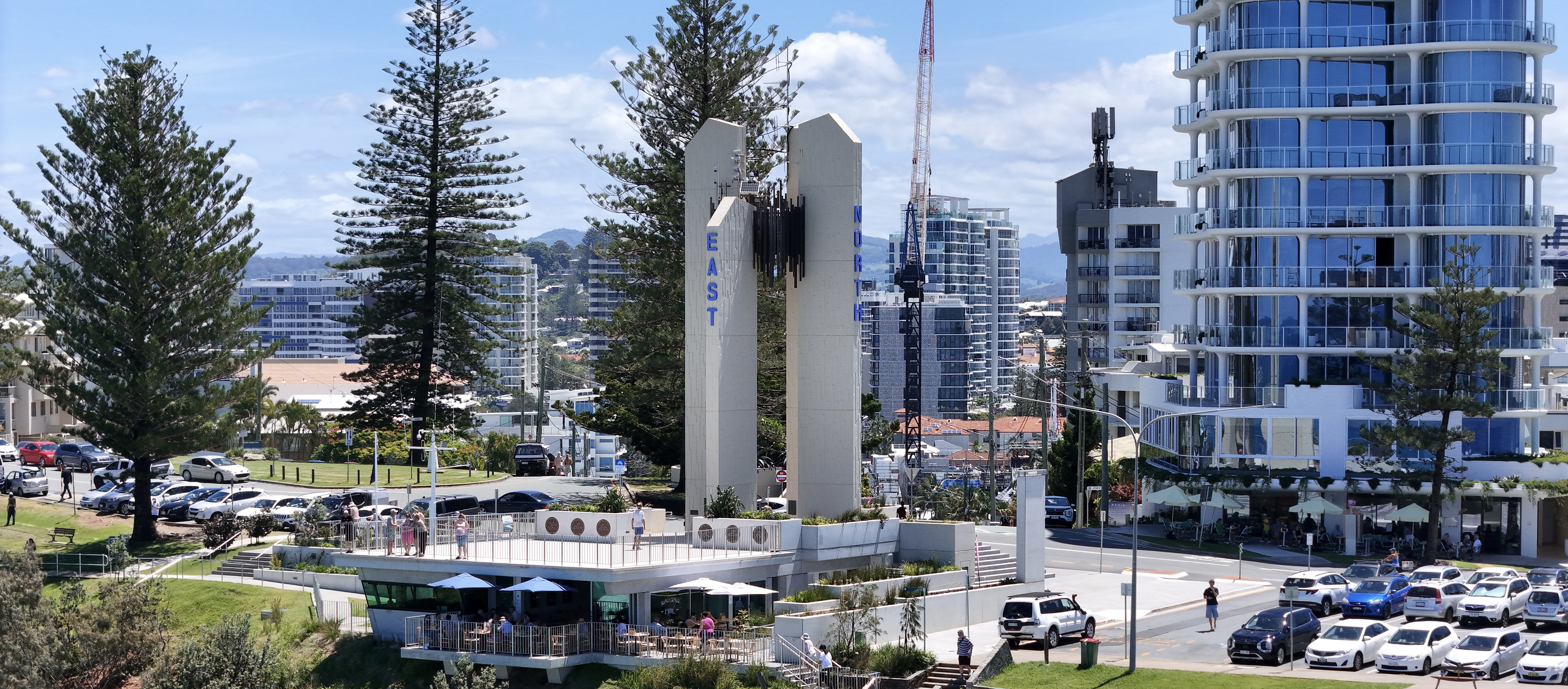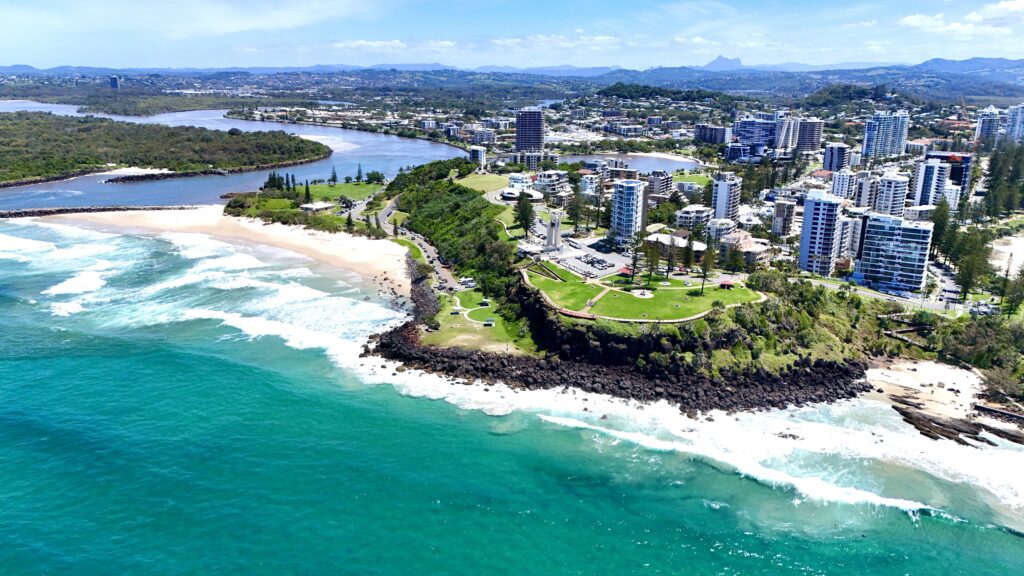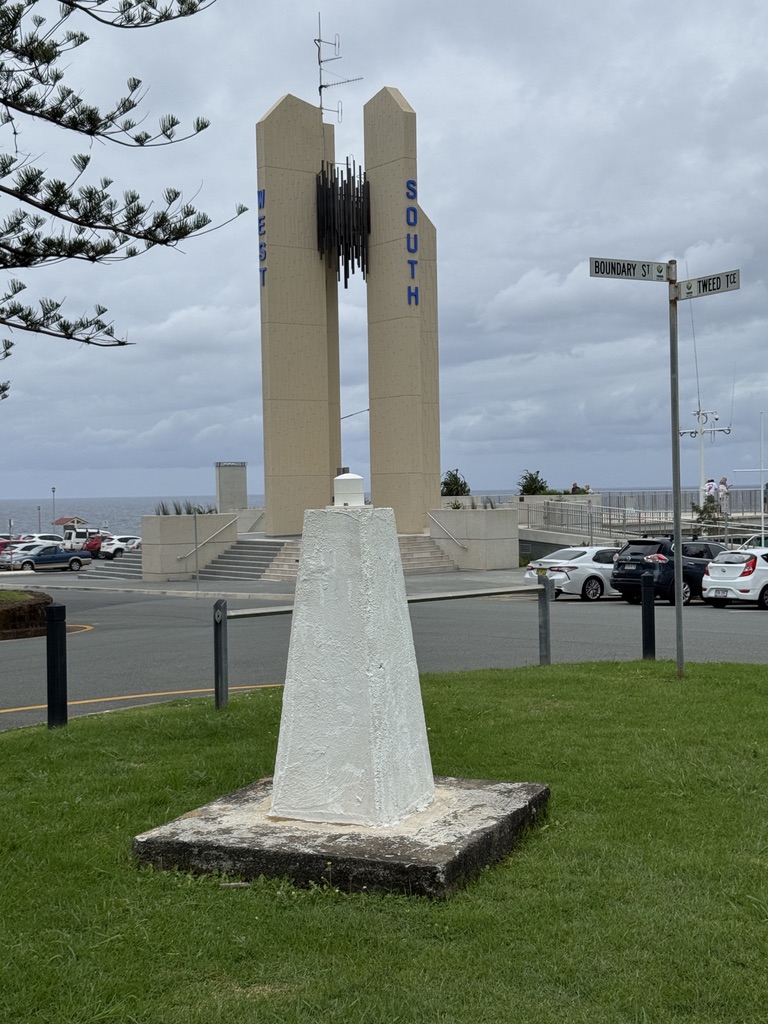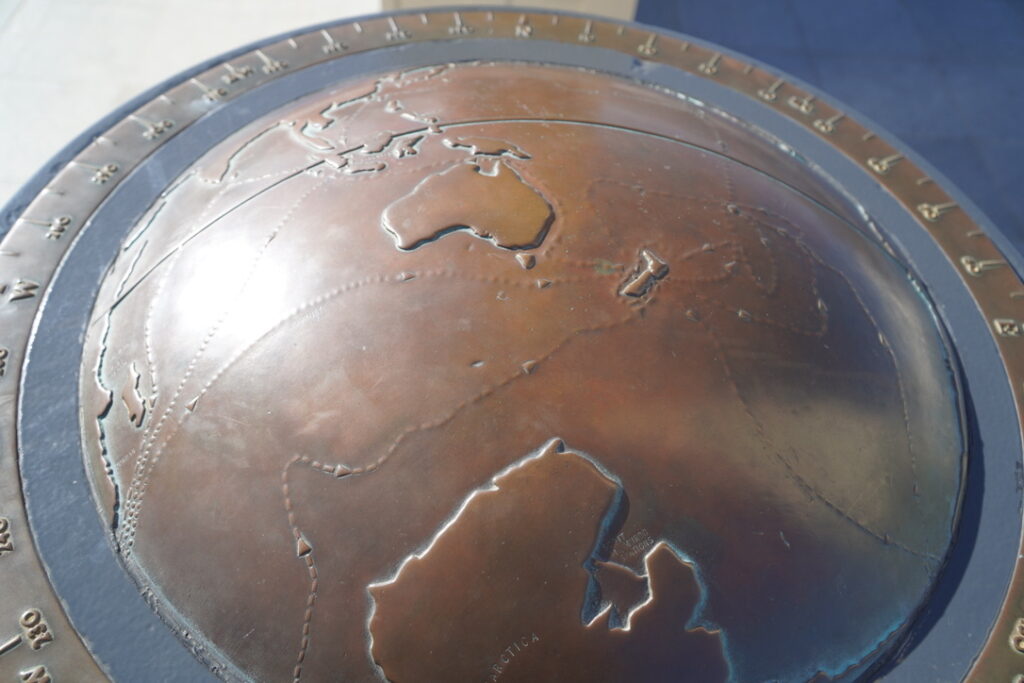
Q: When is a lighthouse not a lighthouse? A: When it’s a monument!
Location:
The Point Danger Lighthouse stands above Duranbah beach on the northern side of the mouth of the Tweed river and straddles the border between Queensland and New South Wales. Each of the four columns are aligned to the cardinal points of the compass.
GPS: Lat: 28° 10’ S : Long: 153° 33’ E
First Lit: 1970
Tower height: 20 m. Focal height: 65 msl
Original Optic: Laser (replaced by conventional AGA PRB 12 in 1972)
Range: 19 nml
Characteristic: Two white flashes every 10 seconds: [Fl W(2) 10s]
History:
As far as I can tell the Point Danger Lighthouse was a completely new structure and didn’t replace any previous lighthouse on this site which is surprising as Captain Cook named Point Danger in 1770 due to the dangerous reefs and islands which lie just off shore from this rocky headland.





New South Wales to the South.
Constructed in 1970, it was built to commemorates the bicentennial of Captain Cook’s first voyage, and specifically the voyage along the east coast of Australia in 1770. It was first exhibited on 17th May, 1970. Point Danger Light was designed by Les Nyerges resident architect on the Gold Coast Council and was the third of a group of seven concrete towers erected between 1964 and 1979 in Queensland. Preceeded by Cape Capricorn Light and New Caloundra Light, and followed by New Burnett Heads Light, Fitzroy Island Light, Point Cartwright Light and Archer Point Light.
Strangely enough despite my dislike for all these other ’70’s concrete abominations that were obviously designed on the basis of function over form, after initially classing Point Danger in the same category I have to admit I now like it’s elegant simplicity and relevance to the ethos of the man it was created to remember.
It lays claim to being the first in the world to experiment with laser technology which was first developed just 11 years earlier. The benefit over a conventional light was the ability to penetrate fog, something that is not common in the Sunshine State. After the initial design was created the Commonwealth Department of Shipping and Transport joined the project to make what was originally planned as a bicentennial monument to also serve as a navigational aid.
The experiment was unsuccessful in that it was unsatisfactory for shipping. The beam emitted was quite powerful but was too narrow to be easily seen by ships. It was replaced by a conventional light, an AGA PRB12 in mid 1972. The Laser apparatus can be viewed at the Queensland Maritime Museum.



Current Display:
The light characteristic shown is two white flashes every ten seconds (Fl.(2)W. 10s), visible at 170°-330° for 19 nautical miles. The light source is an electric lamp, fed by a battery float charged from the mains electricity.
Structures:
The lighthouse is constructed of four concrete columns, aligning with the four cardinal points, and a bronze sculpture hung between the columns.
Site operation and visiting:
The light is operated by NSW Roads & maritime Services. The site is accessible, but the tower is closed to the public.
History: